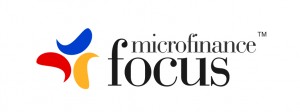5 LESSONS IN MICROFINANCE FROM EASTERN EUROPE
Microfinance Focus, 6 July 2014: Microfinance Institutions (MFIs) based in Eastern Europe are generally more established and experienced than those in Western European nations. More than 73% of Eastern European MFIs were created between 1980 and 1999. By comparison, the majority of MFIs in Western Europe began lending after 2000.
However, microfinance in Western Europe is quickly catching up. In order to ensure sustainable growth and avoid oversight, Western European MFIs would be wise to draw on the expertise of their Eastern counterparts. The following are strategies of successful Eastern MFIs that could benefit the emerging sector in the West.
1) Improve Legal Framework for Microlending
Most Eastern European countries have in place appropriate banking regulation with special considerations for microfinance lending. This is not the case in many Western countries, where MFIs must use commercial banks as intermediaries. This creates greater inconvenience for both microlenders and borrowers and adds cost.
With less rigid banking regulations for microlenders and small businesses, Western European MFIs would be less dependent on commercial banks to make loans. This has already been applied in some Western countries with great success. For example, one French MFI, ADIE, created a window in the French Banking Act specifically for microlending. This removed banks from the lending process and resulted in an increased number of loans.
2) Build Relationships with Non-Financial Stakeholders
Successful Eastern European MFIs begin building relationships with stakeholders right away. Local development agencies and labor offices are concerned with employment rates, and therefore are common partners with MFIs. Eastern European MFIs often use these agencies as means of acquiring potential customers, as well as distributing products and services. These are examples of non-financial support, which is extremely valuable in supporting the MFI’s mission.
Besides maintaining relations with local authorities, it is also important to connect with microfinance organizations in other countries. Foreign MFIs can provide lessons and information on current events and research. Additionally, international partnership is often required to access public funds.
3) Cooperate with Banks
As mentioned in lesson one, dependence on commercial banks can be detrimental to the growth of an MFI. However, cooperation is still encouraged. Concerning sustainable development of an MFI, retaining top customers is key. When MFIs team up with large banks, they are more able to provide products that adhere to client needs at each stage of business development.
Eastern European MFIs frequently team up with commercial banks to offer competitive products such as credit and debit cards. This strategy helps MFIs retain the top 10% of customers, who tend to transfer to the formalized banking sector as their businesses grow. Banks also benefit from this partnership by selling more of their products and therefore will be eager to cooperate.
4) Bring Services to the People
Developing a successful marketing strategy should be a top priority of MFIs. In Eastern Europe, two strategies have proven to be especially lucrative. First, bring your office to the clients. A common mistake of new MFIs is to choose a location that is not accessible to walk-in customers. This limits the client-base. Many Eastern European MFIs are located on street level, in residential areas and close to traffic hubs. At these locations, people can walk-in to the office and take time to get to know an MFI and the services they provide.
Second, encourage staff to leave their comfort zones. Eastern European MFIs have found success by providing monetary incentives to staff members who leave the office and take to the streets to get new customers.
5) Have Efficient Screening Mechanisms
Effective screening mechanisms should be developed as soon as possible in order to reduce costs. Highly standardized application procedures save time and money as well as reduce risk. Fundusz Mikro (FM), Poland’s largest microlender, compares the applicant’s business figures against the statistical average (relative to the size and location of the business). The application is denied if the discrepancy is high. FM calls this number the “honesty indicator,” and can perform the necessary calculations in less than 20 minutes.
FM advises start-up MFIs to test the application process and make corrections as the MFIs expands. Making adjustments later prevents the creation of an over-regulated institution that is unable to adapt to changing markets and demographics.
This article was adapted from a GfA study titled Microfinance in Eastern and Western Europe: A Comparitive Analysis, by Christoph Kneiding and Alexander S. Kritikos.




